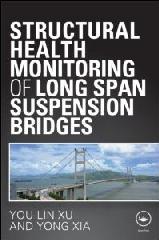Long span suspension bridges cost billions. In recent decades, structural health monitoring systems have been developed to measure the loading environment and responses of these bridges in order to assess serviceability and safety while tracking the symptoms of operational incidents and potential damage. This helps ensure the bridge functions properly during a long service life and guards against catastrophic failure under extreme events.
Although these systems have achieved some success, this cutting edge technology involves many complex topics which present challenges to students, researchers and engineers alike. Systematically introducing the fundamentals and outlining the advanced technologies for achieving effective long-term monitoring, this book covers
the design of structural health monitoring systems
finite element modelling and system identification
highway loading monitoring and effects
railway loading monitoring and effects
temperature monitoring and thermal behaviour
wind monitoring and effects
seismic monitoring and effects
SHMS-based rating method for long span bridge inspection and maintenance
structural damage detection and test-bed establishment
These are applied in a rigorous case study, using more than 10 years' worth of data, to the Tsing Ma suspension bridge in Hong Kong to examine their effectiveness in the operational performance of a real bridge. The Tsing Ma bridge is the world's longest suspension bridge to carry both a highway and railway, and is located in one of the world's most active typhoon regions. Bridging the gap between theory and practice, this is an ideal reference book for students, researchers and engineering practitioners.

(0 Comentarios)